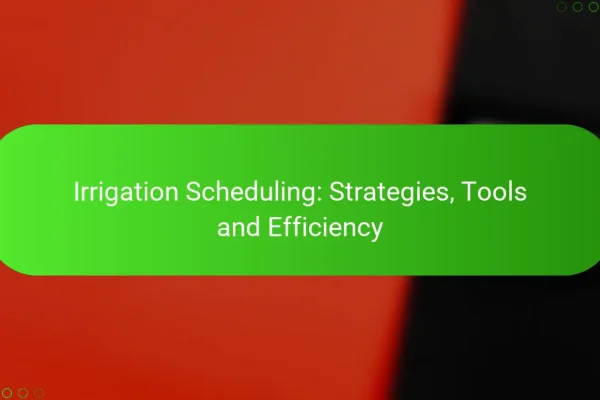What are effective water conservation techniques in South Africa?
Effective water conservation techniques in South Africa include methods that reduce water usage and enhance efficiency. These approaches are crucial in a country facing water scarcity and varying climate conditions.
Rainwater harvesting systems
Rainwater harvesting systems capture and store rainwater for later use, significantly reducing reliance on municipal water supplies. Homeowners can install tanks or barrels to collect runoff from roofs, which can then be used for irrigation or non-potable purposes.
When implementing a rainwater harvesting system, consider the size of your roof and average rainfall in your area. A well-designed system can potentially save thousands of liters of water annually.
Greywater recycling
Greywater recycling involves reusing wastewater from sinks, showers, and washing machines for irrigation or toilet flushing. This technique can reduce overall water consumption by up to 50% in households.
To set up a greywater system, ensure it complies with local regulations and is designed to filter out contaminants. Simple systems can be DIY, but professional installation may be advisable for more complex setups.
Drip irrigation methods
Drip irrigation delivers water directly to the roots of plants, minimizing evaporation and runoff. This method is highly efficient, using about 30-50% less water than traditional sprinkler systems.
When installing drip irrigation, focus on the layout to ensure all plants receive adequate water. Regular maintenance is essential to prevent clogs and ensure optimal performance.
Water-efficient appliances
Water-efficient appliances, such as low-flow showerheads, dual-flush toilets, and ENERGY STAR washing machines, can significantly reduce water usage in homes. These devices are designed to use less water without sacrificing performance.
Look for appliances with the WaterSense label, which indicates they meet specific efficiency criteria. Upgrading to these appliances can lead to substantial savings on water bills over time.
Native landscaping
Native landscaping involves using indigenous plants that are adapted to local climate conditions, requiring less water and maintenance. This approach not only conserves water but also supports local biodiversity.
When planning a native garden, choose plants that thrive in your specific region and soil type. Grouping plants with similar water needs can further enhance efficiency and reduce waste.
How can households implement water-saving practices?
Households can implement water-saving practices by adopting simple techniques that reduce water usage without sacrificing comfort. These practices not only conserve water but can also lead to lower utility bills.
Installing low-flow fixtures
Low-flow fixtures, such as showerheads and faucets, significantly reduce water consumption while maintaining adequate pressure. For instance, a low-flow showerhead can use about 1.5 to 2.5 gallons per minute, compared to the standard 2.5 to 5 gallons.
When selecting low-flow fixtures, look for products that are WaterSense labeled, which meet efficiency criteria set by the U.S. Environmental Protection Agency. Installing these fixtures can lead to savings of up to 30% on water bills.
Regular plumbing maintenance
Regular plumbing maintenance is essential for preventing leaks and ensuring efficient water use. Households should check for dripping faucets and running toilets, which can waste gallons of water daily if left unaddressed.
Consider scheduling annual plumbing inspections to catch potential issues early. Simple fixes, like replacing worn washers or seals, can save significant amounts of water and reduce repair costs in the long run.
Using mulch in gardens
Applying mulch in gardens helps retain soil moisture, reducing the need for frequent watering. Organic mulches, such as wood chips or straw, can lower evaporation rates and keep plants healthy.
When mulching, aim for a layer of 2 to 4 inches around plants. This practice not only conserves water but also suppresses weeds and improves soil health over time.
What are the benefits of water conservation?
Water conservation offers numerous advantages, including cost savings, environmental protection, and enhanced sustainability of water supplies. Implementing effective water-saving techniques can lead to significant long-term benefits for both individuals and communities.
Reduced utility bills
Conserving water directly impacts your utility bills by lowering water consumption, which translates to reduced costs. Households can save tens to hundreds of dollars annually by adopting simple practices like fixing leaks, using water-efficient fixtures, and limiting outdoor watering.
Consider installing low-flow showerheads and faucets, which can cut water usage by 30-50%. Additionally, using mulch in gardens can minimize evaporation and reduce the need for frequent watering.
Environmental protection
Water conservation plays a crucial role in protecting ecosystems and preserving natural habitats. By using less water, we reduce the strain on local water sources, which helps maintain the balance of aquatic environments.
Less water extraction means healthier rivers and lakes, supporting biodiversity and reducing the risk of species extinction. Engaging in water-saving practices also helps mitigate the effects of drought and climate change, contributing to overall environmental resilience.
Increased water supply sustainability
Conserving water enhances the sustainability of water supplies, ensuring that future generations have access to this vital resource. As populations grow and climate patterns shift, efficient water use becomes increasingly important to meet demand.
Implementing rainwater harvesting systems and greywater recycling can significantly reduce reliance on traditional water sources. Communities that prioritize water conservation are better equipped to handle shortages and maintain a stable water supply for all residents.
What regulations support water conservation in South Africa?
In South Africa, several regulations promote water conservation, focusing on sustainable management and equitable access to water resources. Key legislation includes the National Water Act and the Water Services Act, which outline responsibilities and frameworks for water use and conservation efforts.
National Water Act
The National Water Act, enacted in 1998, aims to ensure that water resources are managed sustainably and equitably. It establishes a framework for the protection, use, and management of South Africa’s water resources, emphasizing the need for conservation and efficient use.
This act requires water users to apply for licenses, which helps regulate water allocation and encourages responsible usage. It also promotes the establishment of catchment management agencies to oversee local water resources and conservation strategies.
Water Services Act
The Water Services Act, passed in 1997, focuses on ensuring access to water services for all South Africans while promoting efficient water use. It sets out the responsibilities of water service authorities and providers in delivering water and sanitation services.
This act encourages the development of strategies for water conservation and demand management, which can include public awareness campaigns and incentives for reducing water consumption. Local municipalities are tasked with implementing these strategies to promote sustainable water use within their communities.
What tools can assist in tracking water usage?
Several tools can help monitor and manage water usage effectively, ensuring efficient conservation efforts. These tools provide insights into consumption patterns, enabling users to make informed decisions about their water use.
Water flow meters
Water flow meters measure the volume of water passing through a pipe, providing real-time data on usage. They can be installed in residential or commercial settings and help identify leaks or excessive consumption.
When selecting a flow meter, consider factors such as the size of your plumbing system and the type of water supply. Some models offer digital displays and connectivity to smartphones for easy monitoring.
Smart irrigation controllers
Smart irrigation controllers automate watering schedules based on weather data and soil moisture levels, optimizing water usage for gardens and lawns. These devices can significantly reduce water waste by adjusting irrigation based on real-time conditions.
Look for controllers that integrate with local weather stations or use sensors to gauge soil moisture. This technology can save water and improve plant health by ensuring they receive the right amount of moisture at the right time.
How do community initiatives promote water conservation?
Community initiatives play a crucial role in promoting water conservation by raising awareness and encouraging collective action among residents. These programs often focus on education, resource sharing, and local engagement to foster a culture of sustainability.
Local awareness campaigns
Local awareness campaigns are designed to inform residents about the importance of water conservation and practical ways to reduce water usage. These campaigns often utilize various media, including social media, flyers, and community events, to reach a broad audience.
Effective campaigns might include workshops on rainwater harvesting, demonstrations of efficient irrigation techniques, or distribution of water-saving devices like low-flow showerheads. Engaging local schools and businesses can amplify the message and encourage community participation.
To maximize impact, campaigns should focus on specific local issues, such as drought conditions or water quality concerns, and provide actionable steps residents can take. Simple tips, like fixing leaks or using drought-resistant plants, can significantly contribute to overall water savings.












